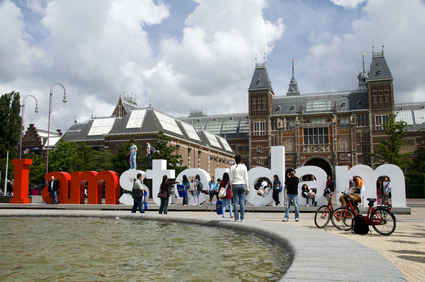
Tourism in Amsterdam is growing faster than in other, comparable cities and it contributes 2.7 billion euros to the prosperity of the Dutch capital, according to a study by SEO Economic Bureau.
Tourism income and employment are increasing, the negative effects of the industry are not, the study concludes, Het Parool reports.
The municipality of Amsterdam asked SEO, which is affiliated with the University of Amsterdam, to try and answer the question of whether the benefits of tourism are bigger than the disadvantages. SEO thinks that they are.
The study showed that Amsterdam receives about 18 million visitors per year. On average each visitor spends 242 euros per visit. That’s a total of about 6.3 billion euros. After costs are deducted, an amount of 2.7 billion euros is left that contributes to the prosperity of the city. This money goes into the wallets of retailers, tourism companies, and their employees – who in turn use money in other stores, cafes and restaurants, keeping the money moving through Amsterdam
Tourism accounts for around 4.5 percent of the Amsterdam economy. “That’s not much compared to, for example, the financial sector”, Bert Tieben of SEO said, according to the newspaper. “But that’s an unfair comparison. Tourism is labor-intensive and provides many jobs.” Since 2007, jobs in Amsterdam’s tourism sector increased by around 33 percent to 61 thousand – around 10 percent of the total jobs in the city. 75 percent of these jobs are for 12 hours per week or more.
Compared to other European cities like Paris, Barcelona, and Rome, Amsterdam’s tourism sector grew above average. The number of visitors to Amsterdam increased by nearly 60 percent since 2007, while the growth in other cities is less than 40 percent.
A regular topic of discussion in Amsterdam is that the many visitors cause many inconveniences, like overcrowded streets, pollution, an overabundance of tourist shops and diminishing social cohesion. Tieben also heard these complaints. “You would therefore expect to see them in the research, but you don’t”, he said to Het Parool. There are more inconveniences in Amsterdam than in the rest of the Netherlands, but these haven’t increased over the past five years. The sense of security in Amsterdam’s city center is high, just like the neighborhood involvement. He added that there are problems, “but in specific neighborhoods”.
This study has its limitations, Tieben added. The crowded city also has impact on housing prices, store offer and holiday rentals. These cause changes in the city, but it’s difficult to express in numbers.
Nevertheless, SEO concludes that “the number of visitors and their spending grew strongly, while most of the negative effects for the city as a whole remained stable or decreased”.
nltimes
















